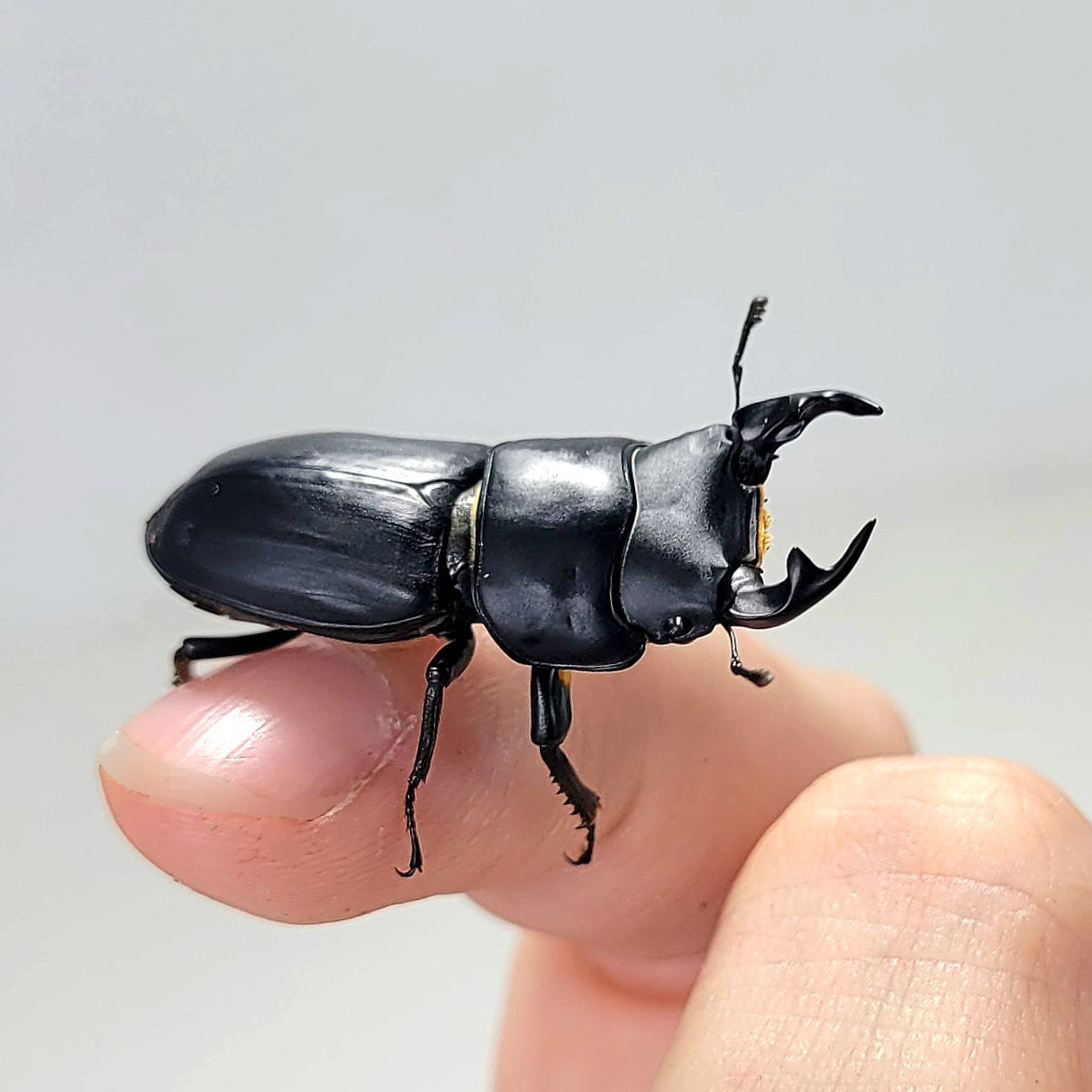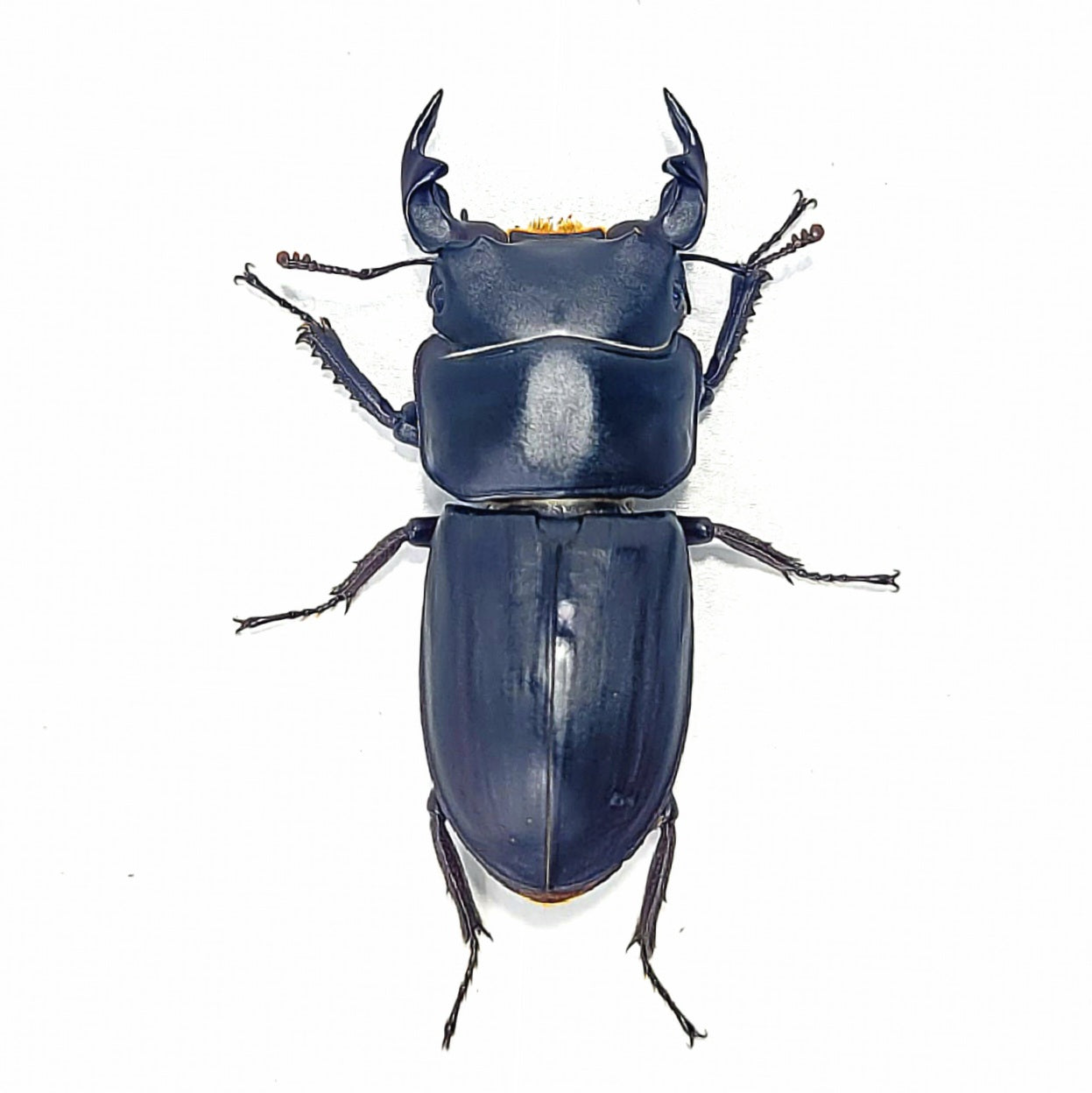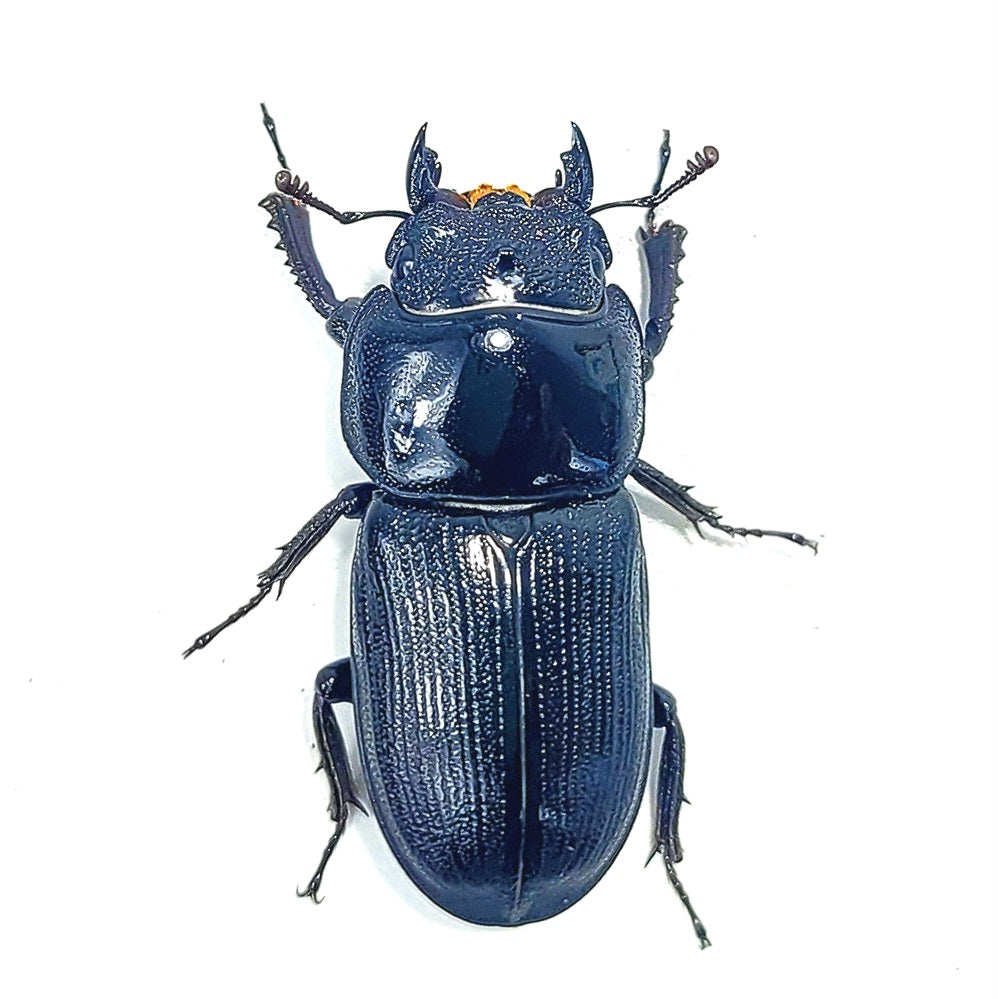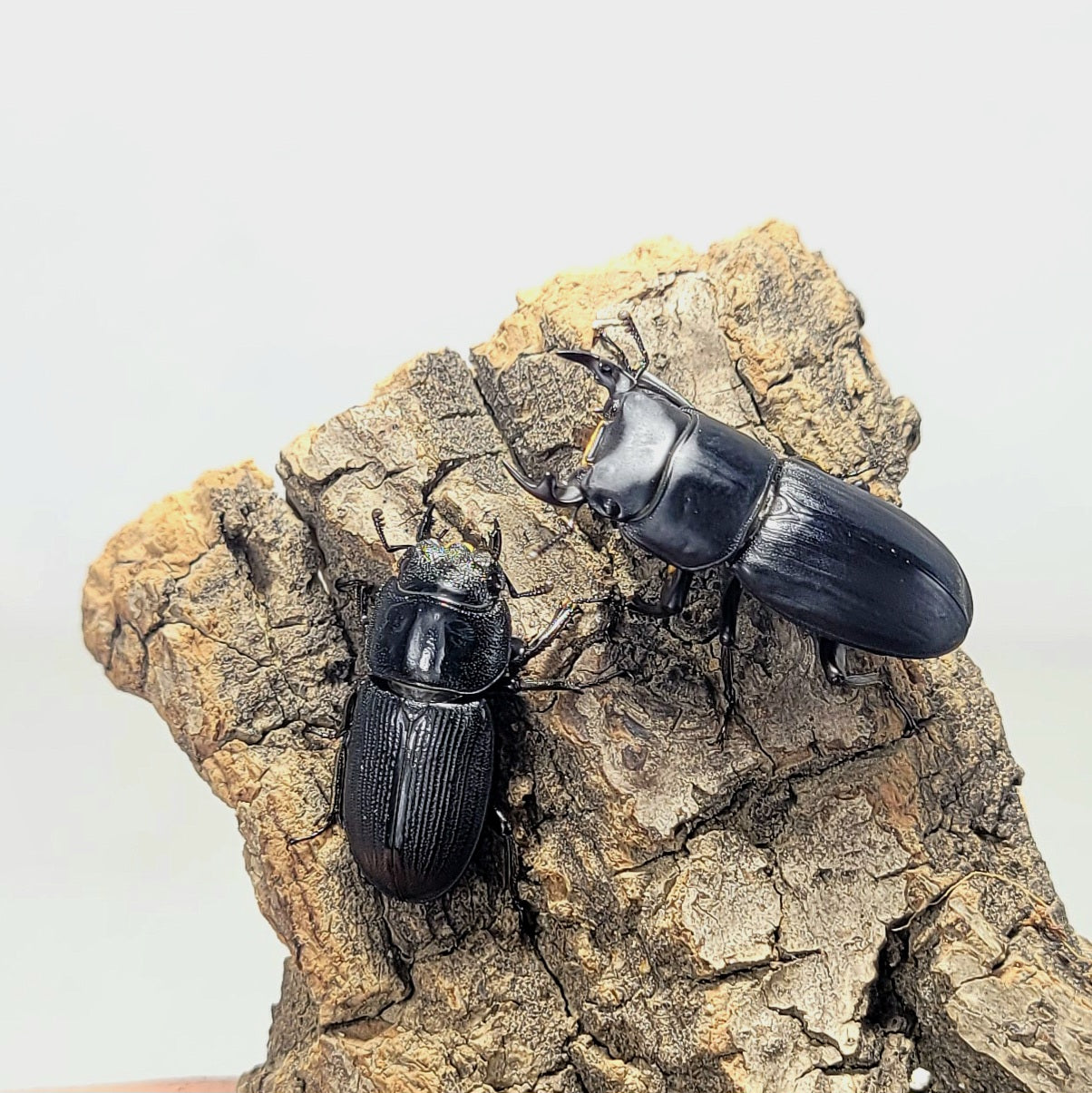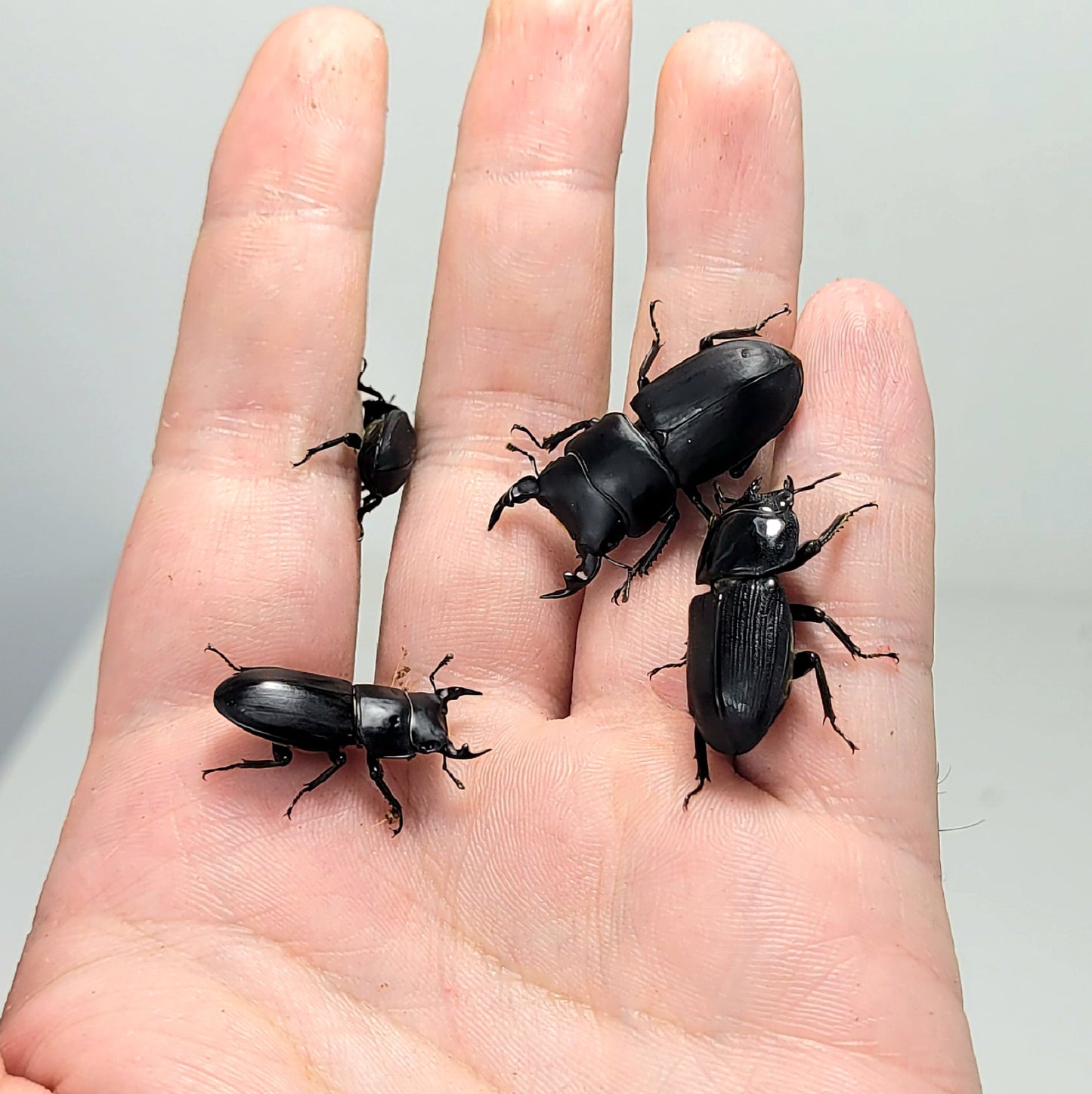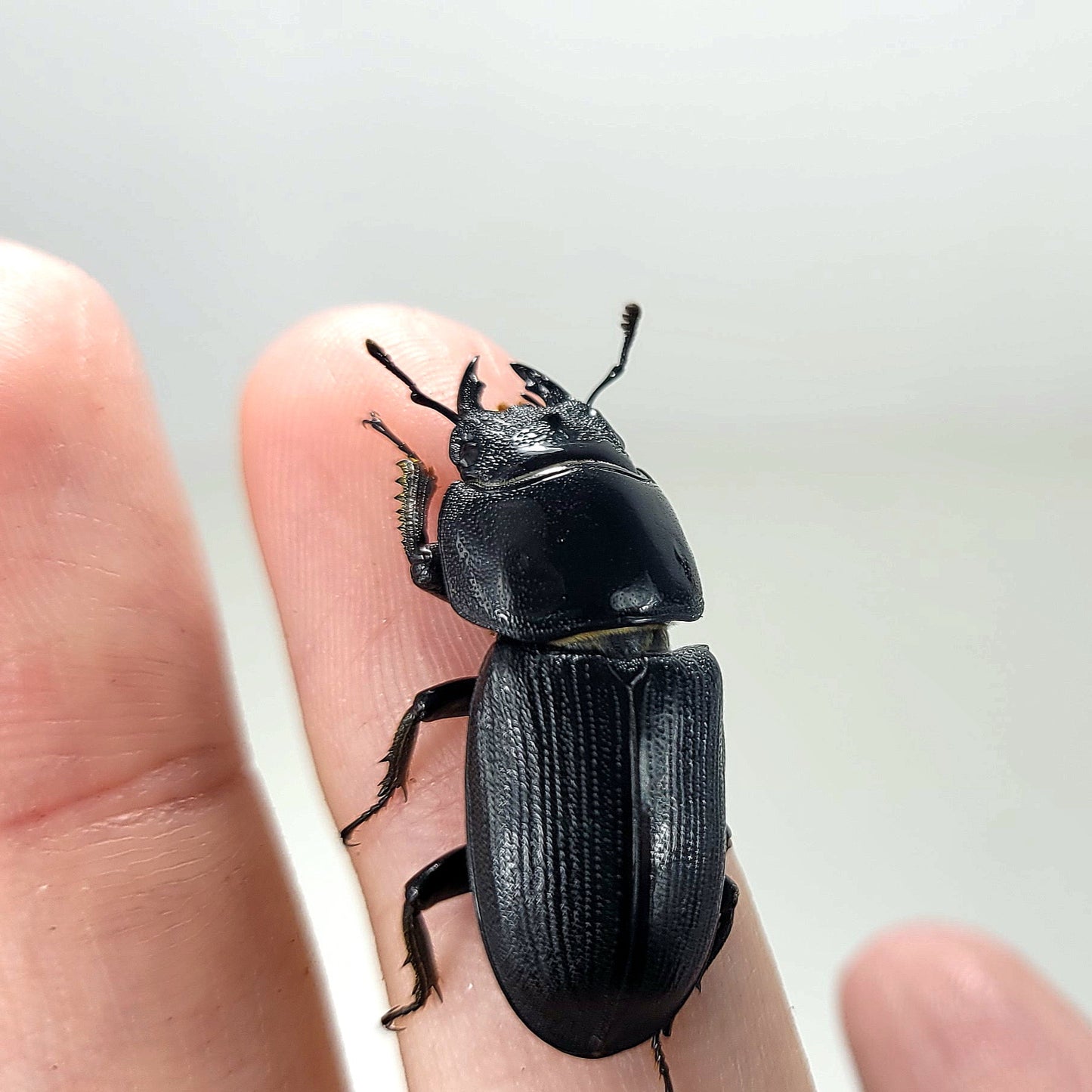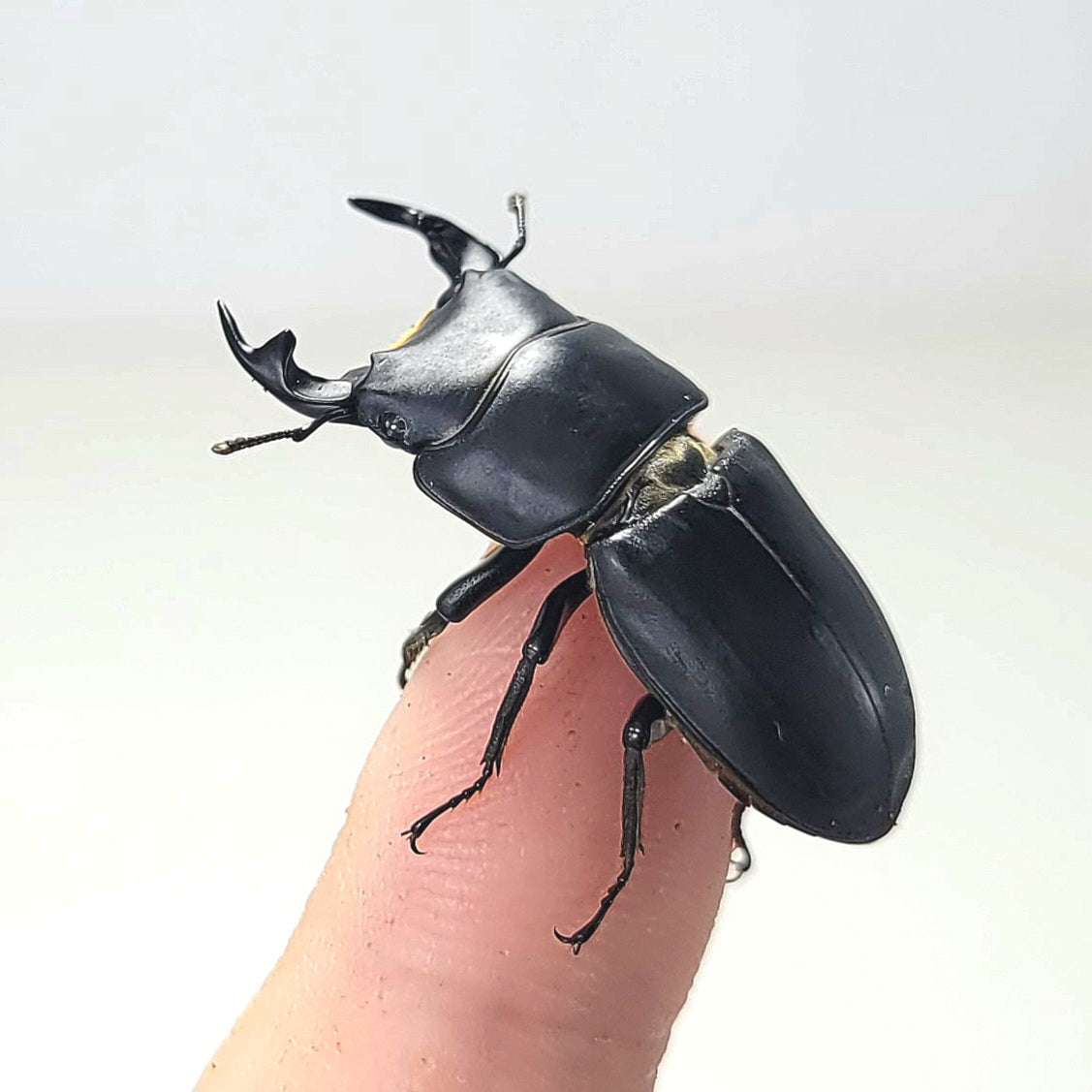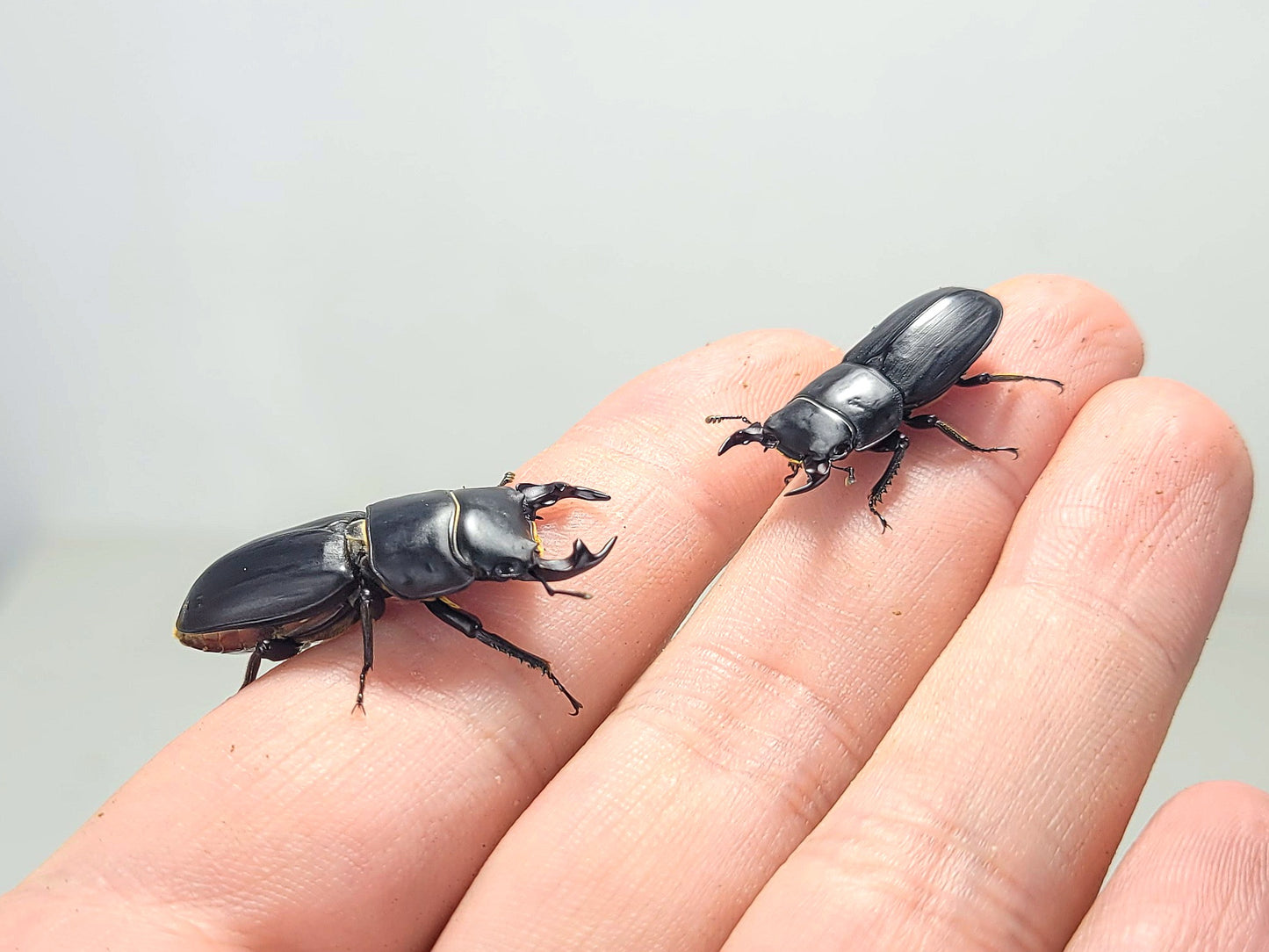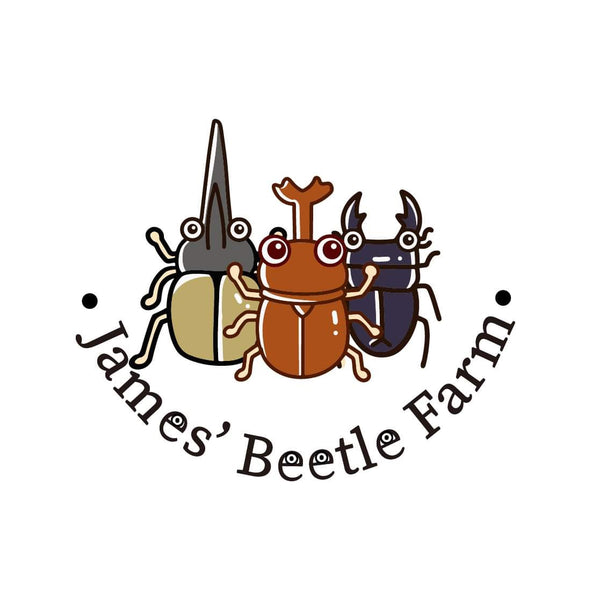James' Beetle Farm
Dorcus Musimon
Dorcus Musimon
Couldn't load pickup availability
Species Summary:
Adult lifespan: 1-2 years
Pupa period: 1 month.
Larva period: Males: 4-6 months, Females 3-4 months.
Breeding difficulty: 3/10
Communal: Yes
Species Info:
Dorcus musimon is a small beetle native to Central Asia and the Middle East. Despite its modest size, this species has distinctive features and is an interesting choice for enthusiasts.
The Dorcus musimon beetle is relatively small, with adults reaching up to 35 millimeters in length. It has the characteristic stag beetle appearance, including prominent mandibles in males, though they are less pronounced compared to larger stag beetle species.
In its native regions, Dorcus musimon is found in forested areas and habitats with decaying wood and leaf litter. These beetles are nocturnal and are most active at night. Males can exhibit territorial behavior, using their mandibles to compete with other males.
In the wild, the Dorcus musimon beetle feeds on tree sap and decaying plant matter. In captivity, they can be provided with beetle jelly and soft fruits like bananas and apples. Proper nutrition is essential for their health.
Breeding Dorcus musimon in captivity involves creating conditions that closely resemble their natural environment. Females lay eggs in decaying wood or similar substrates. The larvae are communal, growing together in the substrate, and take about 4 months to mature. After this period, they pupate and eventually emerge as adults. The entire life cycle, from egg to adult, spans several months.
Adult Dorcus musimon beetles have a lifespan of around 1 year. In captivity, it is important to maintain a warm and humid environment, particularly for the larvae. The substrate should be kept moist but not overly wet, and good ventilation is necessary to prevent mold.
These beetles are generally calm and can be handled gently. Due to their small size, they are less intimidating than larger stag beetles. Gentle handling is recommended to avoid causing stress or injury.
The Dorcus musimon is a small but notable species from Central Asia and the Middle East. With its manageable size and distinctive features, it is a great option for beetle
enthusiasts. Providing appropriate care and environment will help these beetles thrive in
captivity, offering a fascinating look at their natural behaviors and life cycle .
Share
